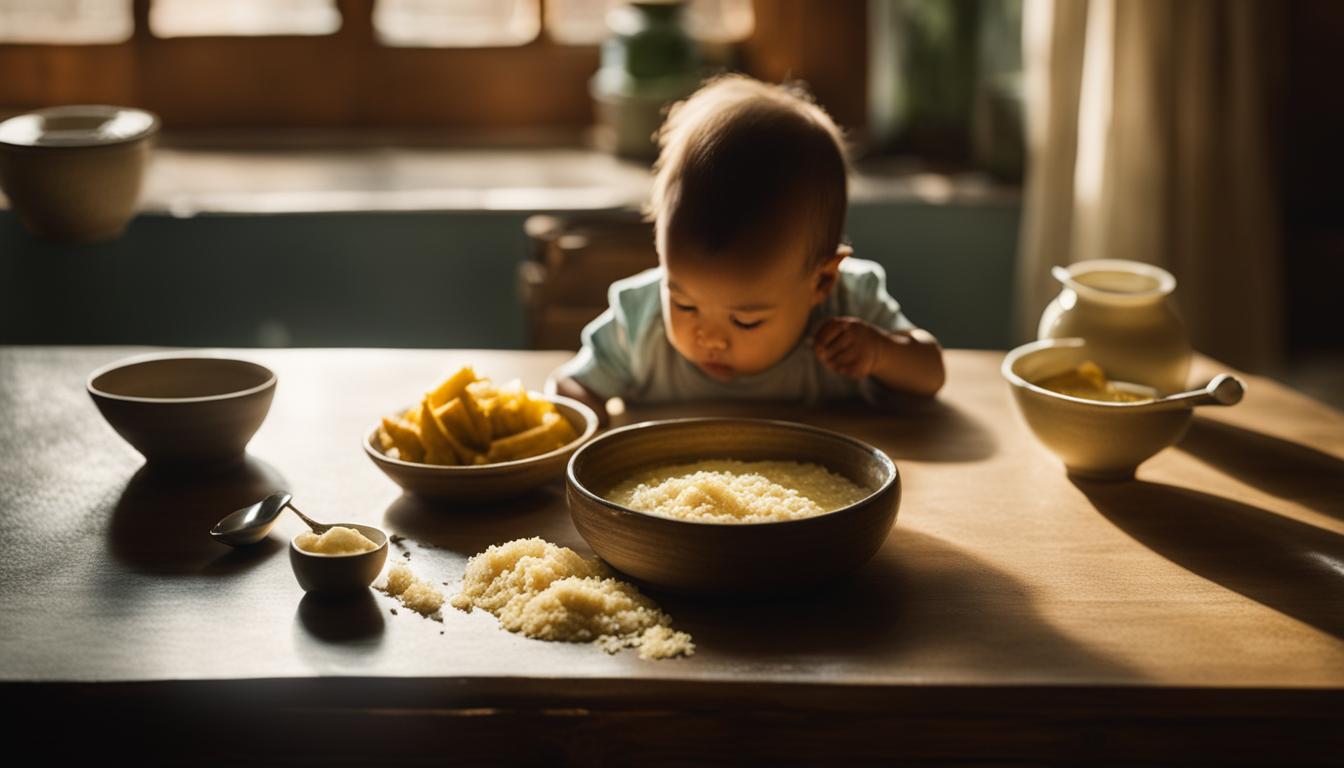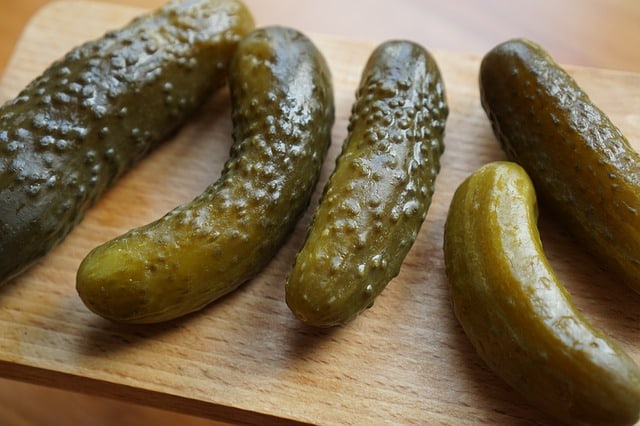1 Year Old Throwing Up Curdled Milk: Causes & Care
Witnessing your 1 year old throwing up curdled milk can be distressing, but it’s a scenario many parents face. It’s vital to understand that while this sight is troubling, it often isn’t a cause for urgent concern. The texture of curdled milk vomit in a 1 year old comes from the mixture of the milk and stomach acid. This is a natural result of the digestion process, particularly when your little one’s digestive tract is still maturing. If you’re looking for remedies for baby throwing up curdled milk, the solution may lie in simple at-home adjustments. When these remedies are not sufficient, curdled milk vomit treatment might require consultation with a pediatrician to rule out any underlying conditions.
As a guardian, your awareness and prompt response can make a significant difference in how your child navigates through these early digestive challenges. With the right approach and information, you can help alleviate their discomfort and ensure their well-being.
Skip To The Following Sections
- Understanding Spit-Up in Infants: Curdled Milk Explained
- Common Causes for Throwing Up Curdled Milk
- FAQ
- Why is my 1 year old throwing up curdled milk?
- Are there remedies for a baby throwing up curdled milk?
- When should I worry about curdled milk vomit?
- How does stomach acid affect spit-up in infants?
- Is there a difference between spit-up and vomiting in infants?
- What causes curdled milk in a baby’s vomit?
- Can changes in a breastfeeding mother’s diet affect baby spit-up?
- What to do when baby throws up curdled milk?
- Does curdled milk vomit in babies indicate lactose intolerance?
- How can dietary adjustments help with curdled milk vomit in infants?
- Source Links
Key Takeaways
- It’s common for infants to experience spit-up that appears like curdled milk due to stomach acids.
- While often not serious, consistent curdled milk vomit in a 1 year old warrants a pediatrician’s attention.
- Simple remedies can often alleviate spit-up incidences, including dietary changes and feeding techniques.
- Persistent or severe symptoms may require professional curdled milk vomit treatment.
- Watching for additional symptoms accompanying spit-up is crucial for determining whether further medical advice is needed.
Understanding Spit-Up in Infants: Curdled Milk Explained
As a parent, it’s natural to feel concern when your infant is vomiting a substance that looks like curdled milk. Understanding what’s happening in your baby’s tummy can provide relief and inform how to respond effectively. Often, this is a benign issue linked to an immature digestive system, but awareness is key to ensuring your infant’s comfort and health.

Let’s explore the causes of curdled milk in a baby’s vomit and what exactly differentiates spit-up from vomiting.
Defining Baby Spit-Up and How It Differs from Vomiting
Spit-up is a gentle regurgitation that occurs as a result of an underdeveloped lower esophageal sphincter (LES), which is a muscle that keeps stomach contents from coming back up. Unlike vomiting, spit-up isn’t forceful and doesn’t distress your baby. It’s a normal occurrence as infants adjust to feeding.
The Role of Stomach Acid in Making Milk Curdle
When you observe curdled milk vomit, what you’re actually seeing is partially digested milk that’s mixed with stomach acid. The acidity causes milk to coagulate, hence the curdled appearance. This reaction is perfectly natural and expected in the early stages of digestion.
Time Factor: The Transformation of Milk Post-Feeding
The length of time milk stays in the stomach plays a crucial role in the extent of curdling. The longer it remains before a spit-up, the more curdled the appearance. If your baby throws up curdled milk, it’s often simply a case of timing and not necessarily indicative of digestive troubles.
Knowing what to do when this occurs is vital. Common suggestions include holding your baby upright during feedings, ensuring they’re not overfed, and burping them properly. If your infant shows signs of distress or if the frequency and volume of spit-up are concerning, it’s wise to seek advice from your pediatrician.
Remember, having an informed understanding of these occurrences can empower you as a parent to ensure your baby remains happy and healthy.
Common Causes for Throwing Up Curdled Milk
As you navigate the first year of parenthood, you might encounter instances where your child experiences curdled milk vomit. This is a common phenomenon that may raise concerns, yet often has simple explanations. For infants and toddlers, their digestive systems are still in a developmental phase, which can lead to **difficulty with digestion**. This difficulty is more pronounced when it comes to breaking down complex substances like lactose or proteins found in cow’s milk, potentially causing lactose intolerance or cow’s milk protein intolerance. Such digestive challenges are frequently observed among babies, leading to the unpleasant sight of curdled milk vomit.
Another prevalent issue in young children is **acid reflux**, which occurs when the contents of the stomach, including acid, move upwards into the esophagus. This is not uncommon in babies as their gastrointestinal tracts are just beginning to mature. The evidence of acid’s work on your baby’s milk consumption is often visible when they spit up the now curdled substance. While less common, a condition known as **pyloric stenosis** should also be kept on the radar. It’s a serious issue characterized by projectile vomiting that necessitates medical intervention, though thankfully, it’s quite rare.
Monitoring your child’s health is key. Keep an eye on the **consistency of spit-up** and be vigilant for any signs of distress, such as **weight loss** or **consistent discomfort**. Should you suspect a more concerning underlying condition, seek pediatric care promptly. Often, simple remedies like small, frequent feedings and changing feeding positions can significantly reduce the frequency and volume of spit-up. For nursing mothers, dietary adjustments might also be beneficial. Remember, addressing curdled milk vomit in babies appropriately can alleviate both your concerns and your baby’s discomfort.
FAQ
Why is my 1 year old throwing up curdled milk?
Your 1 year old may be throwing up curdled milk because of normal digestion processes where stomach acid mixes with the milk. It can also occur due to a developing digestive system that is still learning to process breast milk or formula efficiently, intolerance to certain foods, or a temporary condition like acid reflux.
Are there remedies for a baby throwing up curdled milk?
Yes, there are several remedies you can try to help ease your baby’s discomfort. These include ensuring your baby is in an upright position during and after feedings, offering smaller and more frequent meals, burping your baby regularly during feeding, and possibly adjusting their diet or formula after consulting with a pediatrician.
When should I worry about curdled milk vomit?
Occasional spit-up of curdled milk is typically not a cause for concern. However, if your baby exhibits additional symptoms like discomfort, poor weight gain, refusal to eat, or the vomiting becomes more frequent and forceful, it’s important to consult a pediatrician to rule out any potential underlying conditions.
How does stomach acid affect spit-up in infants?
Stomach acid plays a role in changing the texture of spit-up. When milk mixes with stomach acid, it can become curdled. The degree of curdling may depend on how long the milk has been in the stomach before the spit-up occurs.
Is there a difference between spit-up and vomiting in infants?
Yes, there is a distinction between spit-up and vomiting. Spit-up is typically gentle and effortless, and it may occur with a burp, while vomiting involves a more forceful and possibly uncomfortable expulsion of stomach contents.
What causes curdled milk in a baby’s vomit?
Curdled milk in a baby’s vomit is primarily caused by the mixture of ingested milk and the baby’s stomach acid. This can occur due to natural digestive processes, or it could be a signal of an issue like acid reflux, lactose intolerance, or a sensitivity to certain foods.
Can changes in a breastfeeding mother’s diet affect baby spit-up?
Yes, certain foods in the nursing mother’s diet can affect baby spit-up. Some babies may be sensitive to specific foods consumed by the mother. It’s advised for breastfeeding mothers to monitor their diets and potentially eliminate foods that seem to increase spit-up or cause digestive issues for the baby.
What to do when baby throws up curdled milk?
If your baby throws up curdled milk, keep them comfortable and upright, and monitor for any signs of distress or additional symptoms. Giving small, frequent feedings and ensuring proper burping can help. If the problem persists or you’re concerned, consult with a pediatrician for the best course of action.
Does curdled milk vomit in babies indicate lactose intolerance?
Curdled milk vomit in itself is not an exclusive indicator of lactose intolerance, but it can be a symptom if accompanied by other signs of digestive distress after consuming milk-based products. If you suspect lactose intolerance, it’s important to consult with a pediatrician for proper diagnosis and dietary guidance.
How can dietary adjustments help with curdled milk vomit in infants?
Dietary adjustments can help manage curdled milk vomit by addressing possible food sensitivities or allergies. This might include switching formulas, reducing lactose intake, or altering the breastfeeding mother’s diet. Always make dietary changes in consultation with a healthcare provider to meet the nutritional needs of your baby.










